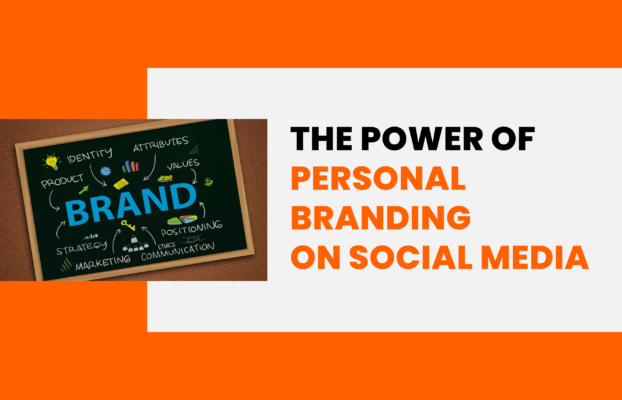If you are a digital marketer or a digital marketing student, you must have faced many questions till now about which you don’t have a clear answer to or the process is a bit complex that it is hard to retain when needed. So here we are, with the answers to the most asked digital marketing questions that you might need now or later.
Digital Marketing
Question 1: What are inbound marketing and outbound marketing?
Answer 1: Inbound Marketing– With the use of meaningful, useful content, it is a type of advertising that aims to assist individuals in making decisions or solving problems. It uses keywords to draw in potential leads, and then it follows them along the buyer’s journey to convert them into customers. Inbound marketing is growing in popularity. An inbound approach aims to attract customers with appealing material they choose to read by utilising a variety of content formats, including blogs, videos, podcasts, social media, and newsletters. People will eventually start to trust the brand, which will make them buy the product naturally.
Outbound Marketing- Outbound marketing is a type of marketing that involves actively reaching out to potential customers through various channels, such as email, social media, advertising, and events. The goal of outbound marketing is to generate leads and drive sales by promoting a product or service to a large audience. Outbound marketing techniques can include things like cold calling, direct mail campaigns, paid advertising, and trade show exhibitions.
Question 2: Are web design and web development the same thing?
Answer 2: Web design focuses on a website’s visual appeal and user-friendliness from the user’s point of view. On the other hand, web development is the coding process that creates the intended design using a variety of programming languages, including HTML, CSS, and JavaScript. Custom web design and development are crucial for a website to make a strong first impression and provide the best user experience.
Question 3: How to drive digital traffic to any website immediately?
Answer 3: One major strategy for driving traffic to your website quickly is to use social media to share posts with links back to it; postings with promotions, competitions, freebies, and other interesting, limited-time content can be very powerful. Additionally, preparing press releases for internet distribution or addressing HARO (Help a Reporter Out) questions where you serve as the expert are both effective strategies for generating leads through online public relations.
SEO-Search Engine Optimisation
Question 4: What are the key areas to use keywords to optimise web page ranking?
Answer 4: As part of SEO, both the title and the body are optimised for keywords. The following are important areas for keyword optimization:
- Title Tag
- URL
- H1 Heading
- Meta Description
- Image Alt Tags
- Text Content
Question 5: How can you tell whether a link is bad?
Answer 5: Bad links generally have the following traits:-
- Links from doubtful or low-authority domains.
- Links that take you to irrelevant backgrounds or sources.
- Links are included in the suspiciously keyword-matched anchor text.
- Links that exchange links and repeat links.
- Links from other websites using the same anchor texts.
- Links from unindexed websites that are part of the Google spam network.
- Paid links.
Question 6: How does content that has been indexed and crawled differ from one another?
Answer 6: When a search engine crawls the web, it discovers new web pages and adds them to its index. The index is a database of all the web pages that the search engine has discovered and contains the content of each page as well as metadata such as the page’s title, the date it was last updated, and any relevant links to other pages.
Content that has been indexed is simply content that has been discovered by the search engine and added to its index. This content is then eligible to be included in search results when a user performs a search using keywords that match the content of the indexed page.
On the other hand, content that has been crawled but not indexed is content
that the search engine has discovered but has not yet added to its index. This could be because the search engine has determined that the content is not relevant or useful to its users, or it may be because the content is duplicative or spammy. In either case, the content will not be included in search results unless and until it is indexed by the search engine.
Question 7: What are the best ways to locally optimise a website? What is Local SEO?
Answer 7: Conduct keyword research for terms that users in your neighbourhood are looking for to locally optimise a website. Your page titles, meta descriptions, H1s, content, blogs, social media postings, and more may all be optimised with these keyword phrases, which are probably going to include the location of your store. It’s a good idea to make distinct web pages on your site for each of your targeted local areas if you have more than one. These distinct pages content needs to be original, tailored to the region, and
interesting to local customers.
Google Ads
Question 8: Tools to use for keyword analysis?
Answer 8: There are various tools used for keyword analysis. It can be both paid and unpaid –
- Free Tools – Google AdWords: AdWord & SEO Keyword Permutation Generator, Keyword Planner, Keyword In, Soovle, Google Trends, WMS Everywhere, Google Autosuggest, Ubersuggest, WordStream Free Keyword Tool, etc.
- Paid Tools – SEMRush, Keywords Everywhere, Majestic, Ahrefs, Moz Keyword Explorer, etc.
Question 9: What is Google AdWords Remarketing?
Answer 9: By using a targeted digital marketing strategy, marketers can communicate with website visitors who have already visited their site but did not convert to leads or made any transactions. It is easier to target the right audience with the right advertisement at the right time with the help of Google Remarketing. It is sometimes referred to as retargeting, which improves in boosting conversion rates and ROI because past site visitors might become buyers after discovering your brand.
Question 10: What is the best strategy for PPC marketing?
Answer 10: The ideal strategy for an effective Pay Per Click campaign should be :
- Adding more PPC keywords to expand the reach.
- Dividing ads into smaller segments to have a better Click Through Rate (CTR).
- Reviewing non-performing PPC keywords.
- Refining landing pages to align with individual search queries.
- Improving campaign relevancy by adding negative keywords.
Question 11: What is the conversion rate in PPC?
Answer 11: The number of conversions divided by the total number of visitors is the conversion rate. For instance, the conversion rate is calculated as 50 divided by 200, or 25%, for an e-commerce site with 200 monthly visitors and 50 transactions.
Any desirable action you want the user to take might be referred to as a conversion. This can range from simply clicking a button to actually completing a purchase and signing up for services. There are frequently several conversion goals on websites and apps, and each will have a different conversion rate.
Question 12: How do you choose keywords for an SEM campaign?
Answer 12: To choose keywords for SEM campaign keep these points in mind:-
- Check your search keywords.
- Compare the price.
- Decide whether to target evergreen or current keywords.
- Pay attention to long-tail keywords.
- Strive for large volumes with less competition.
- Remember to use negative phrases.
- Monitor your expenses and calculate your ROI.
Question 13: How to avoid the Google penalty?
Answer 13: In order to avoid a Google penalty, make sure:
- The website is easy to use, neat, and effective.
- The website works on mobile devices.
- The website is user-friendly.
- Links function properly.
- No duplication of content
- Smart tags and keywords are applied.
Question 14: How are buyer personas segmented?
Answer 14: The following strategies can be used to separate buyer personas:
- Geographic segmentation– Using geographies, such as a city, state, or country, geographic segmentation locates the target market.
- Demographic segmentation– Online advertisers can segment their audiences based on demographics such as age, gender, nationality, income, and others.
- Behavioural segmentation– One can find out about the audience’s online shopping preferences, search history, and other behaviours by using behavioural segmentation.
Email Marketing
Question 15: How to write a perfect marketing email?
Answer 15: Sending emails to customers is mostly done to introduce the brand to them and establish a personal connection. When distributing any marketing email, we should:
- Make a strong and compelling subject line.
- Keep the mail brief.
- Keep the landing page relevant.
- Instead of mentioning the brand, speak to the user’s needs.
- Keep the CTA snappy and helpful.
It is pretty normal to forget very small but important things while we focus on bigger and urgent things. So, here in this blog, we have tried to cover the 15 top most asked questions which are being searched and that you must know about as a digital marketer. You can always come back to this blog to retain the information again. If you have any other questions regarding digital marketing, feel free to contact us!

















